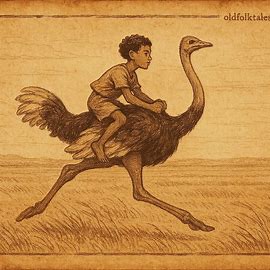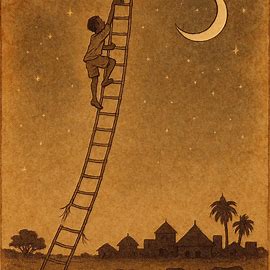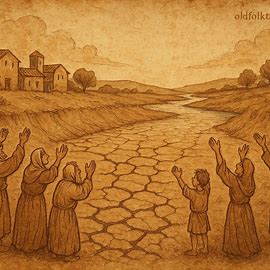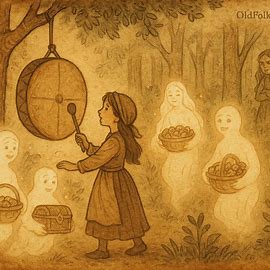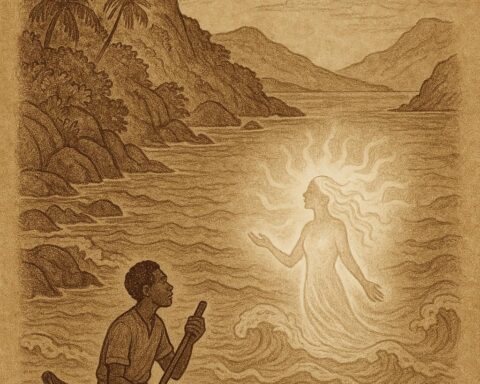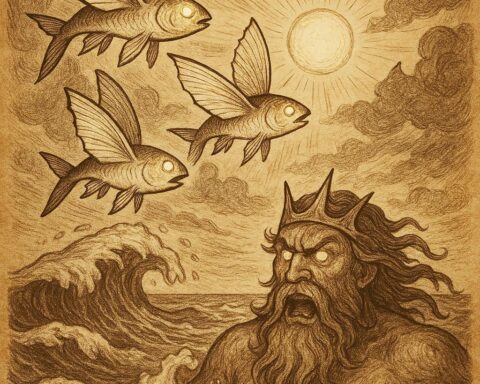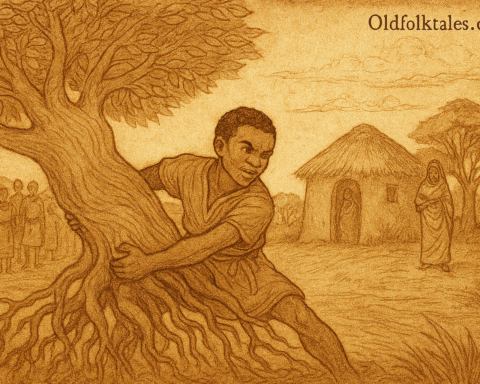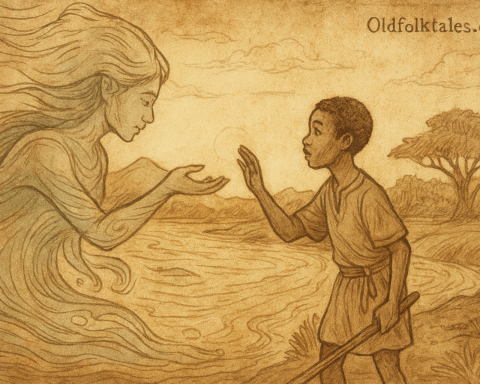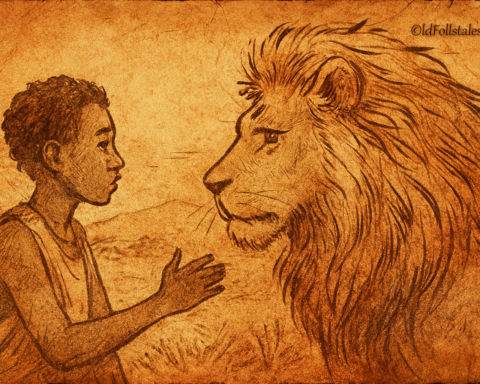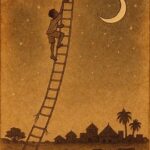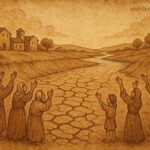Long ago, in the wide and sunlit plains of the Sudan, a restless boy dreamed of journeys beyond the reach of his village. Each day, as he watched the horizon where the tall grasses bent to the wind, his heart longed to see what lay past the distant line of sky and earth. He envied the birds that soared and the herders who wandered far, for his young spirit was restless, eager for discovery.
In those lands, ostriches roamed freely, swift-footed giants whose legs carried them faster than any horse. Their feathers shimmered in the sun, and their eyes reflected a wild pride that no man could easily command. The boy, however, believed that if he could tame such a bird, he would not only explore the plains but also earn the admiration of all who saw him.
So one morning, while the dew still clung to the grass and the world was quiet, he crept near a tall ostrich feeding at the edge of the plain. With patience and cleverness, he managed to snare it. The great bird fought wildly, wings beating the air, but the boy’s determination was greater. Day after day, he tended to the ostrich, feeding it, speaking softly, and slowly earning its tolerance. Over time, the creature allowed him to climb upon its back, and together they began to run across the open land.
The sight astonished the people of the villages. Never before had anyone seen a boy riding an ostrich as though it were a steed. Wherever he went, men, women, and children gathered, their mouths open in wonder. They offered him bowls of milk, baskets of millet, and songs of praise. The boy’s name spread, carried from village to village, until he was spoken of as one touched by mystery and courage.
Yet beneath the admiration lay a truth that only the ostrich knew. It had not been created to serve as a beast of burden. Its wings and legs were gifts of the wild, meant for freedom and speed. Though it had endured the boy’s commands, deep within it remained the fierce spirit of the untamed.
READ THIS: The Talking Drum: A Sudanese Folktale That Teaches Lessons on Peace and Harmony
One afternoon, as the sun blazed high and the air shimmered with heat, the boy prepared to mount once more. With pride swelling in his chest, he dreamed of greater journeys, perhaps even crossing deserts or finding lands no one had ever seen. He placed his hands firmly on the ostrich’s back, certain that it would again obey his will.
But this time the ostrich’s eyes gleamed with a fire the boy did not understand. As soon as he settled into place, the bird spread its mighty wings and bolted forward with astonishing speed. The wind roared in the boy’s ears, the ground blurred beneath him, and the familiar landmarks of his world vanished behind. Faster and faster the ostrich ran, its long legs pounding the earth like drums of thunder. The boy clung tightly, calling out for it to stop, but the creature no longer heeded him.
Deeper and deeper they traveled into the wilderness, into lands where no villagers walked and no herds grazed. The grasses grew taller, the shadows stretched longer, and still the ostrich raced on. At last, both figures became specks against the horizon until they disappeared altogether, swallowed by the meeting of sky and earth.
The villagers waited for the boy’s return. Days passed, then moons, yet neither he nor the ostrich were seen again. Some whispered that he had become a spirit rider, forever bound to the bird, gliding across unseen plains where no human foot could tread. Others believed he was carried into the realm of the ancestors, transformed into a lesson for those who would hear.
Even today, elders tell children this tale by the fireside: do not enslave what is wild, for wildness belongs to the earth and sky. To bind it is to invite loss, for freedom cannot be chained, and pride, once stirred, will always seek its own path.
Moral Lesson
The story of the boy and the ostrich teaches that human desire must respect the natural order. The boy sought to command a creature born for freedom, but in doing so, he lost what he valued most. True respect for nature means understanding its boundaries, honoring its gifts without seeking to dominate them.
This folktale reminds us that pride and restlessness can blind us to wisdom. When we ignore the truth of wildness, we risk being carried away by forces stronger than ourselves.
Knowledge Check
Q1: Who is the main character in this Sudanese folktale?
A young boy who dreams of traveling far across the plains.
Q2: What animal does the boy tame and ride?
He tames an ostrich and uses it as a mount.
Q3: How do the villagers react when they see the boy riding the ostrich?
They are astonished, praising him and offering gifts of milk and millet.
Q4: Why does the ostrich eventually run away with the boy?
Because it was never meant to be enslaved, and its wild nature reclaims it.
Q5: What lesson do elders pass on from this tale?
That wildness cannot be chained and must be respected.
Q6: What cultural group preserved this folktale?
The Nuer people of Sudan, collected by Frobenius in 1923.
Source: Nuer folktale, Sudan.
